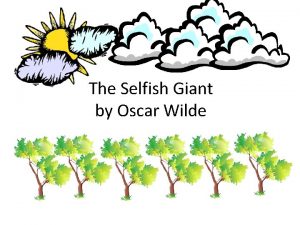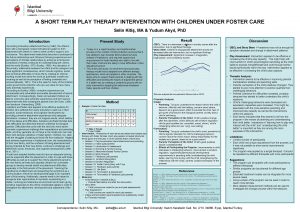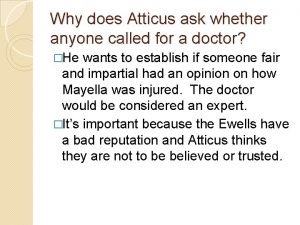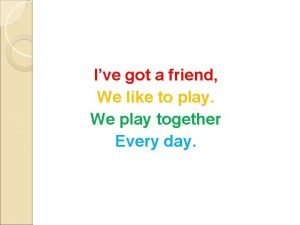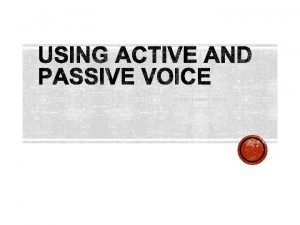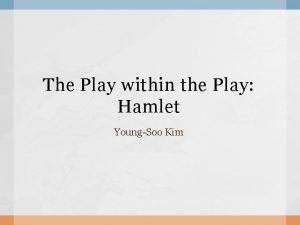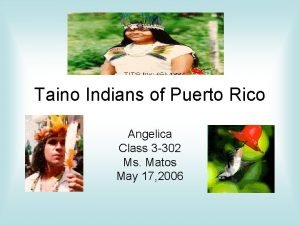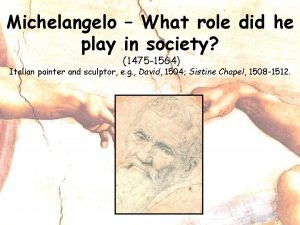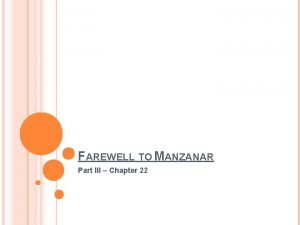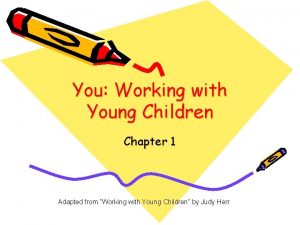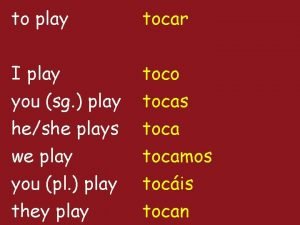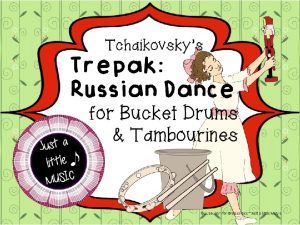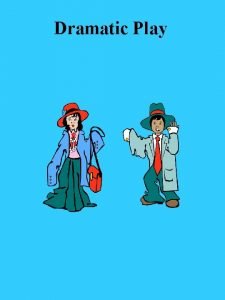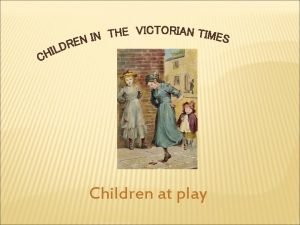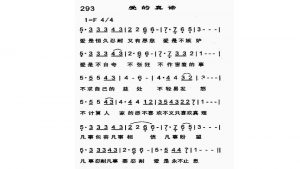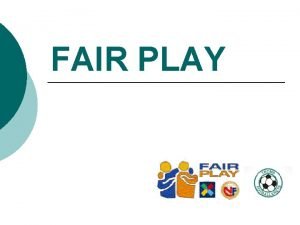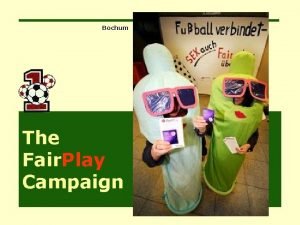Children at Play How did children play in





















- Slides: 21

Children at Play How did children play in the past? • What types of toys did children have in the past? • How are they similar to and different from toys of today? • What games did children play in the past? • What type of clothing did children wear in the past? How is it different from our clothing today? • Tell or write a story about one of the children in these pictures.

A. B. Quinn with Doll Carriage in Little Rock

● ● ● Where do you think this girl was playing? What evidence in the photo makes you think this? What is the girl wearing? What is the doll wearing? How is the clothing similar to and different from clothes we wear today? What questions do you have about this photograph? Mary Elizabeth Parker Photograph Collection (UALR. PH. 0061), UALR Center for Arkansas History and Culture.

Four Young Children Loading Rocks Into a Wagon. . .

● What do you think these children are doing? ● What toys do you see in this picture? Do children today play with any of these kinds of toys? ● What questions do you have about this picture? Jessie Tarbox Beals, photographer. “Four young children load rocks into a wagon while a smaller child sits on the ground playing with his toy ponycart, ” ca. 1915. Goldsberry Collection of Open-Air Schools, Library of Congress Prints and Photographs Division

Two African American girls playing with yarn and knitting needle at Harlem playground

● What are these girls playing with? ● What adjective would you use to describe the girls? Give evidence from the picture to support your answer. Ward, Florence. “Two African American girls playing with yarn and knitting needle at Harlem playground”. Visual Materials from the National Association for the Advancement of Colored People Records, 1950 -1970. Library of Congress Prints and Photographs Division.

Children Playing with Rope at Beach

● ● ● What people, objects, and activities do you see in this photograph? How can you tell this photograph was taken in the past? How do you think children playing at the beach would look different today? Detroit Publishing Company. Children playing with rope at beach, possibly Atlantic City, N. J. Library of Congress Prints and Photographs Division.

Small Fry Football

● What words would you use to describe the boys in this photograph? ● How do football uniforms today look different than the football uniforms in this photograph? Higgins, Roger, photographer. “Small Fry Football. ” World Telegram & Sun, Brooklyn New York, 1959. Oct. 6. Library of Congress Prints and Photographs Division.

Playing Marbles

● ● ● What game are the boys playing? What do you think the weather was like on the day this photograph was taken? How can you tell this photograph was taken in the past? Rothstein, Arthur, photographer. Boys Playing Marbles, FSA…Labor Camp, Robstown, Texas. January 1942. Farm Security Administration – Office of War Information Color Slides and Transparencies Collection. Library of Congress Prints and Photographs Division.

Untitled Photograph, possibly related to Jumping Rope on Sidewalk. . .

● ● ● What are these children doing? Do children today do this? Describe the children in this photograph. Describe the houses in the background. How are they similar to and different from where you live? Edwin Rosskam, photographer. Untitled photograph, possibly related to Jumping rope on sidewalk in one of the better neighborhoods of the Black Belt, Chicago, Illinois. April 1941. Farm Security Administration Office of War Information Collection, Library of Congress Prints and Photographs Division.

Makeshift playhouse Jerome Relocation Center

● What are these children playing with? Why do you think they are playing with these things? ● Have you ever built a playhouse? What did you use to build it? Why? ● During what time of year do you think this photograph was taken? Give evidence to support your answer. United States War Relocation Authority. “Makeshift playhouse Jerome Relocation Center” November 20, 1942. Life Interrupted Collection, UALR-MS 0250_04_na_02_03_05. B_pho 16. UA Little Rock Center for Arkansas History and Culture. Original in National Archives.

Toy Sale

● What toys do you see in this poster? Do children today play with any of these toys? ● What toys that you play with today are not in this poster? Why do you think they are not shown? ● Why do you think an artist created this poster? Who was the audience for the poster? Toy Sale. New York, Federal Art Project. Works Progress Administration Poster Collection.

Toys, toys!

● What toys do you see in this listed on this poster? Do children today play with any of these toys? ● Why do you think this primary source was created? ● Who was the audience for the poster? ● What questions do you have about this primary source? Lotts, J. F. Toys, toys! at wholesale and retail. The temple of enchantment. J. F. Lotts …. Boston. Geo. B. Hamlin, printer, 131 Hanover Street. Boston, 1860. Library of Congress Printed Ephemera Collection.
 The selfish giant every afternoon
The selfish giant every afternoon Texas children's pawsitive play
Texas children's pawsitive play Short-term play therapy for children
Short-term play therapy for children Viii
Viii Describe mayella’s injuries
Describe mayella’s injuries I've got a friend we like to play we play together
I've got a friend we like to play we play together Louise made the chocolate cake active or passive
Louise made the chocolate cake active or passive Typewriter types
Typewriter types Gozago
Gozago I was playing football yesterday
I was playing football yesterday Why is the priest doing this
Why is the priest doing this Jack i played tennis yesterday
Jack i played tennis yesterday Did you play tennis yesterday
Did you play tennis yesterday Taino homes
Taino homes Did you play tennis yesterday?
Did you play tennis yesterday? What role did nationalism play
What role did nationalism play What role did he play
What role did he play What inscription was on the flagpole circle?
What inscription was on the flagpole circle? ?what did you ...........last weekend
?what did you ...........last weekend Where you went
Where you went Working with young children chapter 1
Working with young children chapter 1 Working together to safeguard children’ 2018 summary
Working together to safeguard children’ 2018 summary
